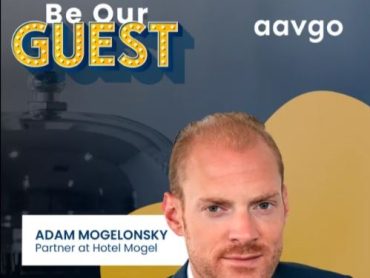HITEC 2015: Lessons for Your Outbound E-Marketing Efforts
Attending HITEC as a member of the press, I was bombarded with e-blasts and emails from vendor representatives vying for me to drop by their booths or set up a meeting. All together, I received close to five hundred emails in the month leading up to and during the week that was the tradeshow. That’s a lot to read – too much in fact for someone who also has a full-time job outside of his hospitality writing. As such, most of these emails received only a cursory glance and were summarily dispatched via the DELETE button.
But herein lies a very powerful lesson. When someone is harried, stressed and managing multiple projects at once (as I’m sure you all are if you are doing your jobs rights!), you just don’t have time for much else. So, how do you get a stranger’s attention in an email, even if the call to action is something as minute and innocuous as ‘Visit our booth!’?
Before I answer this question, let’s start with what not to do. Understand that these are my own personal preferences and should not be considered gospel.
- Walls of text. Looking at a computer screen for work all day is tiring enough on the eyes; the last thing I want to do is struggle through an eight-line paragraph explaining what your product is. It’s downright intimidating. Keep it short – two to three lines max.
- Saying you’re ‘the best’. At least a quarter of the introductory emails I received purported their company as ‘the best’, ‘leading’, ‘preferred’, ‘foremost’ or another similar expression. Guess what? If everyone says they’re the best, then no one is, and your use of such verbiage rubs off as deceptive – not a good way to start a business relationship.
- Unsolicited attachments. If I’m struggling to read a wall of text within the email, do you really think I have time for an unprompted PDF? Be they press releases (and yes, this is coming from a media person), branded white papers or other supplemental materials, while I’d like to read them, I just don’t have the time, and your lack of empathy for my situation is bothersome.
- Excessive graphics. Seeing lots of shiny logos or embedded images is an immediate turnoff as it indicates a lack of personalization. Such graphics cue me to think of the email as a catch-all e-blast with no regard to my personal state of affairs. Again, if I’m hard-pressed to keep pace with the business correspondence addressed to me personally, how do you think I’ll have time for the impersonal emails?
- Excessive bold, italics, underlining or text coloration. These font stylizations are the spice, not the main ingredient. When used too much, it all blurs together and makes the email appear as highly impersonal and ignorable. The most appropriate uses I saw were to highlight the booth number or the most pertinent details about the product on display.
- Using a ‘bolt on’ personalization. The body of the e-blast starts with a personalized salutation then goes directly into the text of a dense and complex press release which has nothing to do with me. This isn’t personalization, this spam in sleep’s clothing and I’m too busy to read a series of eight line paragraphs. Trash basket!
- Too many three letter acronyms. I am a professional engineer and a bit of a tech geek. But many of the releases were so complex that even I couldn’t follow them. Get another set of eyeballs on any outbound e-marketing campaigns to ensure that the ideas are succinct as well as comprehensible to the layperson.
That said, you know what really gets my email mojo going? A straightforward, three paragraph letter with each paragraph comprised of only one sentence. The first sentence must indicate that you know something about me so it wouldn’t be immediately interpreted as a ‘bolt on’. In the next line, spell out the logline of your product – that is, tell me what you do in as few words as possible, leaving out the ineffective bells and whistles. Last is your call to action, inquiring about a time to visit your booth, arrange for an offsite meeting or establish whatever other objective intended for the letter.
I took several dozen meetings while at HITEC and each started with a simple email in this format. I wasn’t picky about who I met with – I wanted as broad a perspective as possible. But when there are thousands of people vying for your attention, you have to set certain criteria, and mine was a legible, personalized email. In this age of digital marketing, consumers are bombarded by e-blasts on a regular basis and many people have become numb to this channel. Use these inscribed lessons to help guide your future efforts.
And again, know that these were my own requirements and do not necessarily represent those of other attendees. Do yours differ? What prompts you to stop what you’re doing and read an email from someone you don’t know?
(Article by Larry Mogelonsky, published in HOTELS Magazine on Friday, July 10, 2015)



